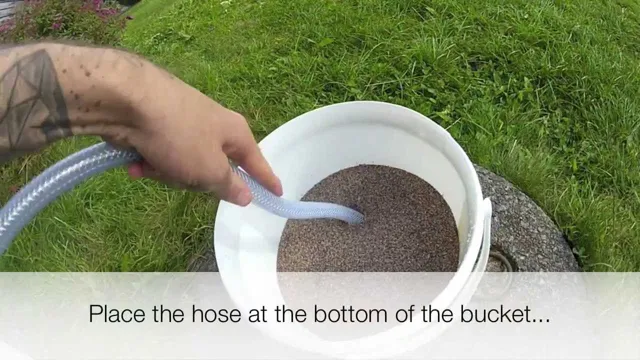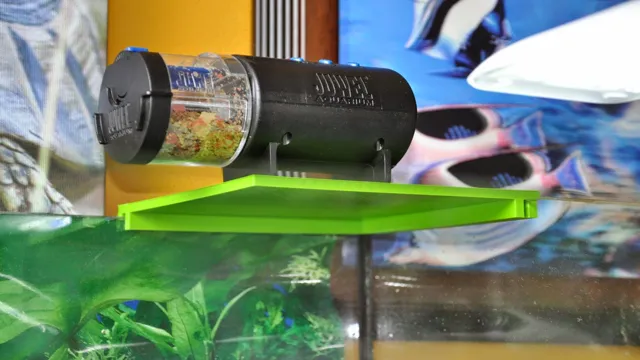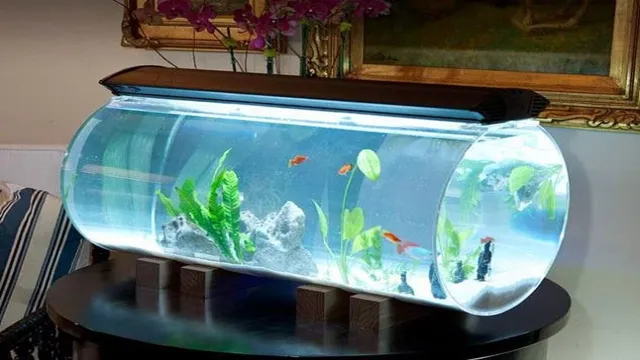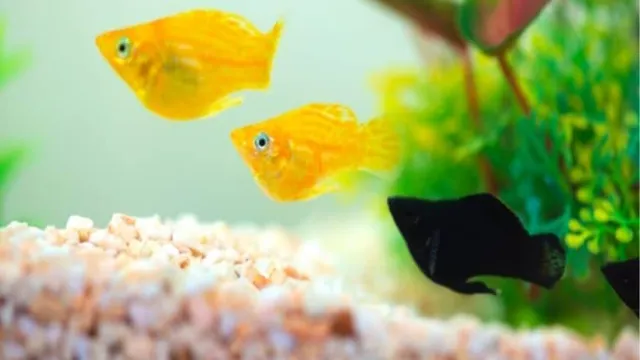Are you tired of cloudy aquarium water and unhealthy fish? One of the most important aspects of maintaining a thriving aquarium is keeping the sand clean. It’s not just a matter of aesthetics, but also the health of your aquatic pets. Dirty sand can harbour harmful bacteria and create an unhealthy environment for marine life.
In this blog, we’ll guide you through the best methods to clean sand for your aquarium and ensure your fish and other aquatic creatures live happily and healthily. From siphoning to using sand cleaners, we’ll cover all the necessary steps to keep your sand pristine and prevent potential health hazards.
Preparing for Cleaning
When it comes to setting up your aquarium, cleaning your sand is an essential step to ensure a healthy and happy environment for your fish and plants. Before adding anything to your tank, it’s important to prepare your sand properly. Start by rinsing your sand thoroughly with clean water to remove any debris or dust that may have accumulated.
You may need to do this several times until the water runs clear. Next, you can sanitize your sand by boiling it for a few minutes or adding aquarium-safe cleaning solution, following the instructions carefully. Once your sand is clean and sanitized, it’s ready to be added to your aquarium.
A clean and well-prepared substrate will help maintain the overall cleanliness of your tank, reduce the risk of harmful bacteria, and promote the health of your aquatic ecosystem. So, take the time to clean your sand properly before adding it to your aquarium – your fish and plants will thank you for it!
Remove Discolored Sand
When it comes to cleaning a sand surface, preparing the area is crucial for a successful outcome. This means removing any discolored sand that may detract from the overall appearance of your area. Discoloration can be caused by a variety of factors such as weathering, high traffic, or organic material such as leaves and dirt.
Before you start cleaning, it’s important to remove the discolored sand. This task can be easily accomplished by using a rake to remove the top layer of sand that appears discolored. Once this step is completed, you can move onto the cleaning process.
By ensuring that the sand surface is free of discoloration, you can ensure that the cleaning products will work effectively, leaving you with a fresh and sparkling clean surface. Main Keyword: Discoloration.

Remove Waste and Debris
When preparing for a cleaning project, it’s important to remove any waste and debris in the area. One of the first steps in this process is to assess the space and identify any large or hazardous items that may need special handling. These could include old appliances, bulky furniture, or construction debris.
Once these items have been identified, they should be safely and responsibly removed from the area. This may involve hiring a professional trash removal service or renting a dumpster for temporary use. Once all large items have been cleared out, it’s important to thoroughly sweep or vacuum the area to remove any smaller debris such as dust or dirt.
By removing waste and debris prior to cleaning, you’ll be able to work more efficiently and effectively, ensuring a thorough and successful cleaning job.
Rinse Sand in Small Amounts
When preparing to clean sand, it’s essential to rinse it in small amounts. You might be tempted to dump the entire bag of sand into a bucket and start cleaning, but doing so could cause more problems than it solves. Instead, grab a handful of sand and run it under warm water, using your hands to agitate the sand and remove any debris.
Once the water runs clear, transfer the sand to a clean container and repeat the process until you’ve cleaned all the sand you need. Rinsing sand in small amounts ensures that you get every grain clean without wasting water or making a mess. So, if you want your sand to be sparkling clean and free of dirt and debris, remember to take it slow and rinse in small amounts. (See Also: How to Aerates Your Aquarium If Electricity Goes Out: A Complete Guide)
Cleaning the Sand
If you’re looking to set up an aquarium with sand as your substrate, you’ll need to know how to clean it properly before adding any fish or plants. Over time, sand can accumulate debris and waste, which can lead to poor water quality and harmful bacteria growth. First, scoop out any excess debris or uneaten food using a siphon or net.
Then, rinse the sand thoroughly in a bucket using fresh water until it runs clear. Some aquarists also recommend boiling the sand for a few minutes to kill off any harmful bacteria, but make sure to let it cool down completely before adding it to your tank. Another option is to use a sand cleaner or filter to automatically remove debris.
By properly cleaning your sand, you can create a healthy environment for your aquatic pets to thrive.
Boiling the Sand
Boiling the sand is a crucial step in cleaning sand. Many people use sand for a variety of purposes, from constructing buildings to creating beautiful beaches. However, sand contains a lot of impurities, such as dirt, rocks, and other debris that can make it less desirable for certain applications.
Boiling sand can help to remove impurities and make it cleaner and more suitable for use. To boil sand, you need to add it to a pot of boiling water and let it simmer for a while. The heat from the water will break down any organic matter in the sand, while the boiling action will help to remove any other impurities.
Once the sand has been boiled, you can strain it and let it dry before using it for your desired purpose. Boiling the sand is an easy and effective way to clean it, and it’s something that anyone can do with just a few simple steps. So next time you need clean sand, try boiling it and see the difference it makes!
Bleaching the Sand
When it comes to keeping your sand clean, bleaching is one of the best solutions. This process removes any impurities in the sand to give it a fresh and clean look. While it may sound daunting, the process itself is quite simple.
All you need is a bucket, bleach, and water. Begin by mixing the bleach and water to create a solution, then pour it evenly over the sand. Use a large stick or shovel to mix the sand around, ensuring that the bleach solution gets to every grain.
Let it sit for about an hour, then rinse thoroughly with water to remove any remaining bleach. Your sand will now be much cleaner and brighter than before. This process is especially useful for sandboxes or outdoor play areas where children may come into contact with the sand.
By bleaching the sand, you can help prevent the spread of germs and keep your play space safe and clean. So why not give it a try today and enjoy a cleaner, more hygienic play area for your family?
Using Hydrogen Peroxide
If you’re looking for a natural way to clean the sand in your fish tank, using hydrogen peroxide can be an effective solution. Hydrogen peroxide can help eliminate harmful bacteria and algae, as well as other organic matter that may be present in the sand. To do this, you’ll need to mix one part hydrogen peroxide with ten parts water and pour it over the sand.
Allow it to sit for a few minutes before draining the water and rinsing the sand thoroughly. It’s important to note, however, that hydrogen peroxide should be used sparingly as it can harm beneficial bacteria in your aquarium. Use a test kit to monitor the levels of beneficial bacteria in your aquarium, and keep an eye out for any signs of stress in your fish.
With proper care, using hydrogen peroxide can help maintain a clean and healthy environment for your aquatic pets. (See Also: How to Keep Aquarium Fish Alive: Top 10 Tips for Happy Fish)
Drying the Sand
If you’re looking to set up an aquarium and want to use sand as a substrate, it’s important to make sure it’s properly cleaned first. Drying the sand is a crucial step in the cleaning process. Start by rinsing the sand thoroughly in a bucket until the water runs clear.
Then, transfer the sand to a large, flat surface and spread it out in a thin layer. Leave it to dry in the sun for at least two days, flipping it periodically to ensure all the moisture is evaporated. Keep in mind that while this method is effective, it can be time-consuming, so make sure to plan accordingly.
Once the sand is completely dry, it’s safe to use in your aquarium. By taking the time to properly clean and dry the sand, you’re ensuring a healthy and safe environment for your aquatic pets.
Sun Drying
Sun drying is a traditional technique used for drying sand that has been used for centuries. This method involves spreading sand on a flat surface and allowing the sun’s rays to dry it out naturally. This process is efficient and cost-effective, making it a popular choice for people who do not have access to more advanced drying equipment.
However, caution must be observed to ensure that the sand is dried evenly and adequately because the temperature and humidity levels can significantly affect the process. In addition, the quality of sand plays a vital role in the sun-drying process. High-quality sand that is free from impurities dries well in the sun, while impure sand may not dry uniformly and may result in issues with the finished product.
Therefore, it is crucial to choose the right kind of sand and maintain appropriate moisture levels to ensure a high-quality end product. Overall, sun drying sand is an effective and practical approach to produce high-quality sand suitable for a range of applications.
Oven Drying
Oven drying is a convenient way to dry your sand, especially during the winter months when the sun is not shining as much. To oven dry your sand, preheat your oven to a low temperature, ideally no higher than 200 degrees Fahrenheit. Spread your sand out on a baking sheet in a thin layer and place it in the oven for no longer than 2 hours.
Stir the sand occasionally to ensure it dries evenly. It’s important not to overheat the sand as it could cause it to clump together. Once the sand is dry, let it cool, and then it is ready to use.
Oven drying your sand ensures that it is free from any moisture, which is important if you are using it for construction projects or creating sand art. So why not give oven drying a try and see how easy it can be to dry your sand all year round!
Reintroducing Clean Sand to Your Aquarium
If you’re looking to reintroduce clean sand to your aquarium, there are a few steps you’ll want to follow. First, gather all of your aquarium equipment and materials. You’ll need a bucket, a strainer, and your current substrate.
Start by removing all of the plants, decorations, and fish from the tank and placing them in a separate container with old tank water. Next, use the strainer to sift out any debris or waste from the current substrate. Once you’ve done this, fill the bucket with clean water and add your sand, stirring it around until it’s fully submerged.
Allow it to soak for a few hours, stirring occasionally, before using the strainer to rinse off any remaining particles. Finally, you can add the clean sand back to your tank and carefully introduce your plants, decorations, and fish. By following these steps, you can ensure that your aquarium remains a clean and healthy environment for your aquatic friends. (See Also: How to Make a Cheap Planted Aquarium: Tips and Tricks for Creating a Budget-Friendly Aquascape)
Conclusion
In conclusion, cleaning sand for your aquarium may seem like a daunting task, but with the right tools and techniques, it can be a breeze. Remember, never underestimate the power of a good siphon and a little bit of elbow grease! With some patience and dedication, you’ll have a sparkling clean aquarium that your fish (and guests) will love. Just don’t forget to treat yourself to a well-deserved glass of wine afterwards – you’ve earned it.
“
FAQs
What tools do I need to clean sand for my aquarium?
To clean sand for your aquarium, you’ll need a siphon, a bucket, a net, and an aquarium-safe cleaner.
Can I clean my aquarium sand without removing my fish?
Yes, you can clean your aquarium sand without removing your fish. Use a siphon to remove debris and waste from the sand while minimizing disturbance to the fish.
How often should I clean my aquarium sand?
You should clean your aquarium sand once a month to prevent the buildup of waste and debris.
What is the best way to clean sand for a saltwater aquarium?
The best way to clean sand for a saltwater aquarium is to use a specialized sand cleaner or vacuum and to rinse the sand thoroughly before adding it to the aquarium.
How can I prevent sand from clouding my aquarium water when cleaning it?
Use a slow and steady flow of water when cleaning the sand, and avoid disturbing the sand too much. You can also try adding a water clarifier to the aquarium to help reduce cloudiness.
Is it safe to reuse old sand in my aquarium after cleaning it?
Reusing old sand in your aquarium is safe as long as you clean it thoroughly and ensure that it is free of debris and waste.
How can I maintain clean sand in my aquarium?
To maintain clean sand in your aquarium, regularly clean and vacuum the sand surface, avoid overfeeding your fish, and remove any uneaten food or waste promptly.







